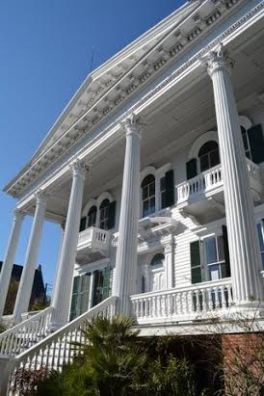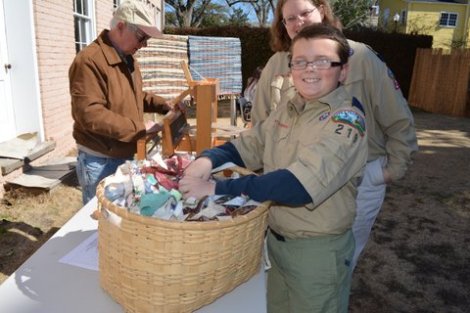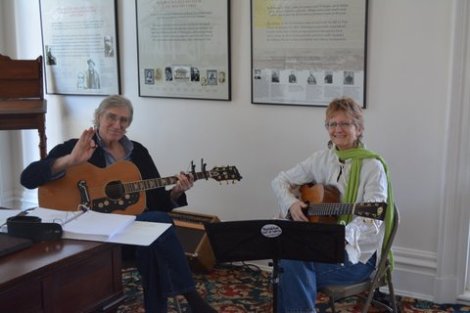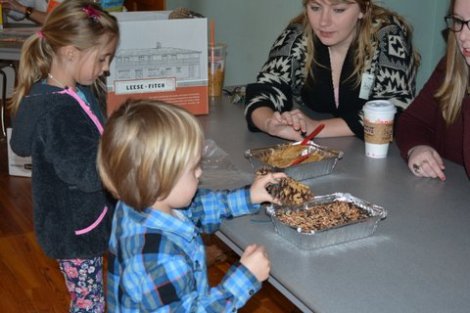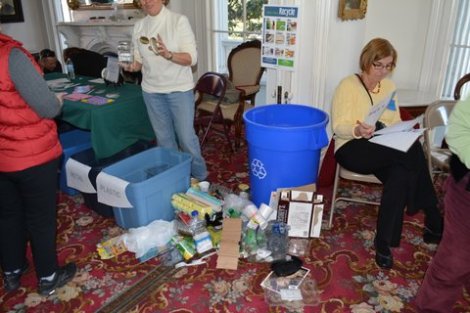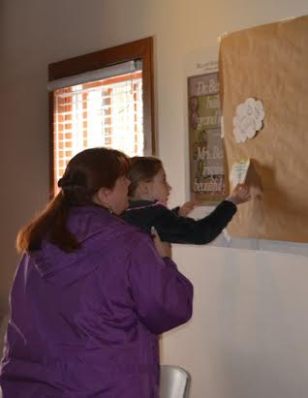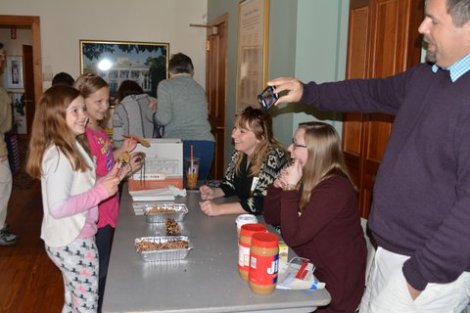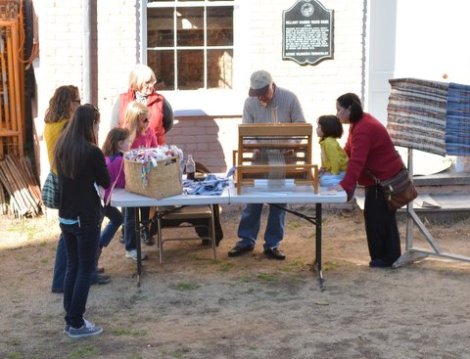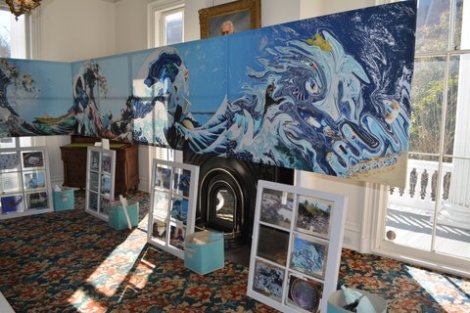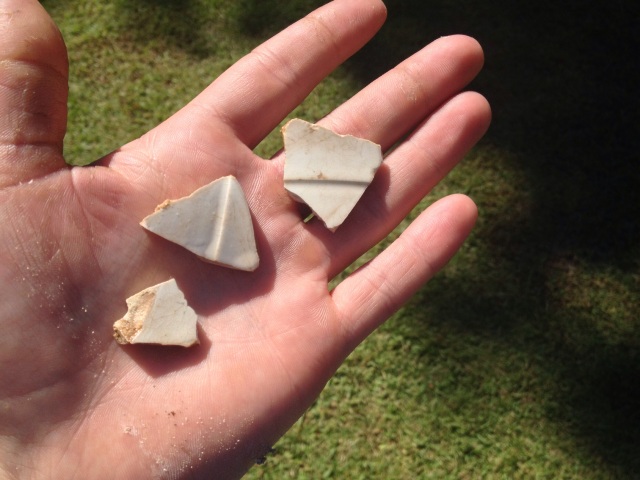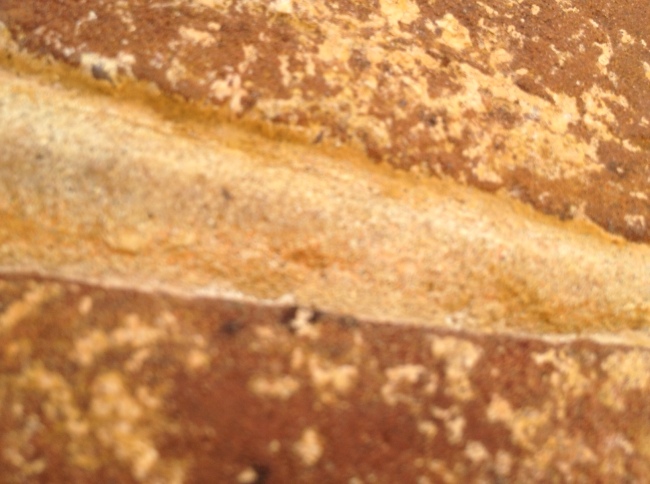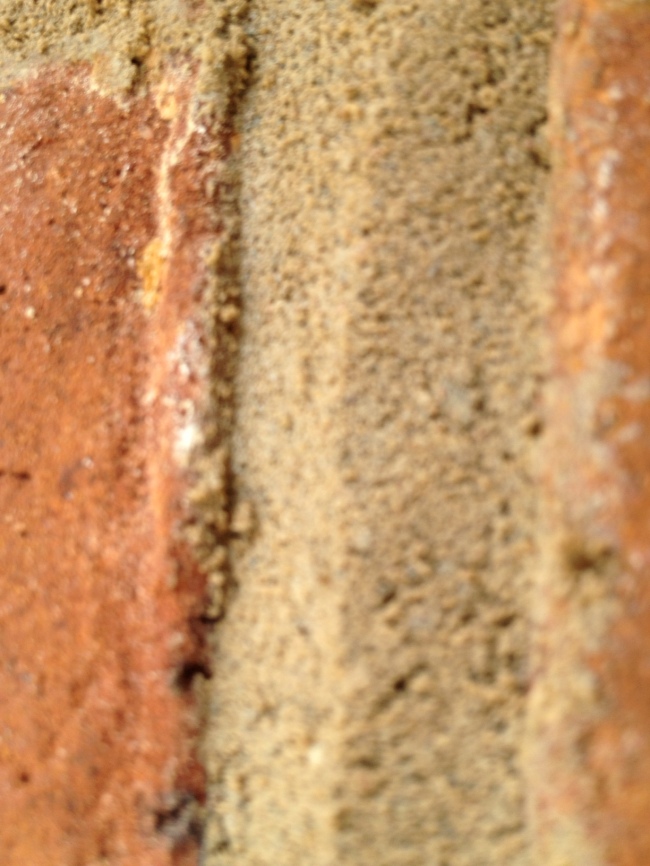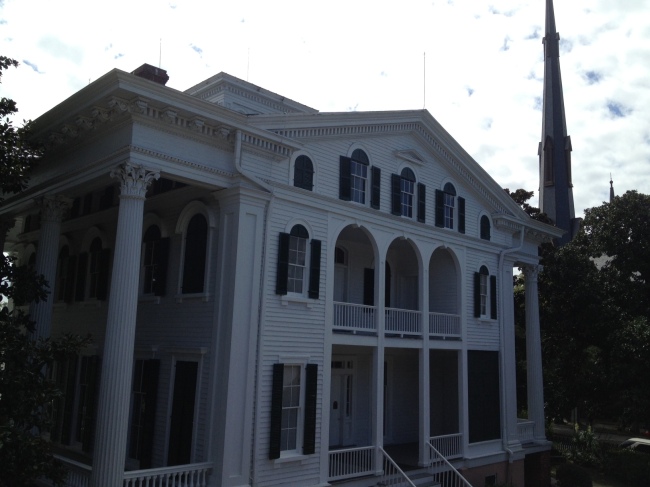The Bellamy Mansion hosted a free family event called Going Green on Sunday the 16th. The weather was beautiful, which meant there were happy, smiling faces all around! Activities were held inside and outside of the house that included live music, crafts for children, exhibits with recycling ideas, weaving, chickens to pet, and tours showing how the Bellamy Mansion was built green-friendly. Over one hundred and fifty people attended making it an educational and fun day!
Restoration Update: Plaster work beginning in Slave Quarters
Restoration continues in the Slave Quarters at the Bellamy Mansion. Wayne, John, Mac and Tab of Heritage Restoration began their plaster work in the eastern room upstairs this morning. Plaster work is no easy business. It requires a lot of hard work and muscle to apply the thick gritty plaster onto the walls and ceiling. The mixture is made of sand, lime, and either hemp or horse hair. Today the workers are using hemp. The addition of the hemp fiber helps to bond and strengthen the plaster mixture. The hard workers begin by applying a first coat to the walls, called the scratch coat. The scratch coat takes a day or two to dry depending on the weather. The slower the plaster is cured the stronger it becomes. The walls and ceiling will receive three coats of plaster each. With each coat the workers put less and less sand into the mixture so that the lime becomes the major component. This makes the finished coat a lighter color that is much smoother than the other coats. The plaster process will take time to complete. Not many craftsmen are still skilled in plaster work today, which makes it somewhat harder to find available help. Wayne came all the way from Hillsborough to assist with this project. Luckily the Bellamy Mansion found hard working, skilled craftsmen to complete the job!
Evidence of Rare Wood Carving Techniques
- Notice the vertical cuts in the board.
One of the most fascinating aspects of the Slave Quarters Restoration work is discovering the old techniques used by the original builders to construct the quarters. A previous article has been written on the interesting floor joist that was pulled out, which had mortises carved into it so that workers could use scaffolding. While inspecting this beam, Mack from Rogers Building Corp noticed vertical cuts in the side of the wood. Mack explained that these cuts are evidence of an old and very rare woodcarving technique using a tool called an Adze. The carpenter wood stand on the board and make multiple cuts into the wood using the adze. The adze blade is perpendicular to the shaft and allows the carpenter to take out large chunks of wood making it easier to mill and level large areas of wood with minimal equipment. Mack also said this is a very rare technique and shows, yet again, how skilled the builders were in the 19th century. The following video shows how an adz is used. http://www.youtube.com/watch?v=2o5leRq4eyk
More Debris Found in Mortar Joints
Wayne Thompson of Heritage Restoration has begun working on the East Wall of the Slave Quarters. Thompson is in the process of repointing the entire wall and while he was prepping the existing joints he found some more debris. He discovered more porcelain tile and some black stones. At first we believed the black stones were coal but after cleaning them up it was discovered that they were in fact Obsidian, which is a volcanic rock. This is very intriguing because it means that someone deliberately found the obsidian and placed it in the wall. Was this part of a ritual to protect the building? More research is needed.
China Found in Mortar Joint
While repointing the mortar joints on the south wall of the Slave Quarters, Wayne Thompson found something he has never seen: broken china in the mortar joint. Three pieces of white broken china were placed in the mortar joint to fill space. This china most likely dates back to 1859 when the Slave Quarters were originally constructed
Fingerprints Found on Bricks
While repairing bricks on the Slave Quarters, Wayne Thompson of Heritage Restoration found four fingerprints in one of the bricks. The prints are from the original mason’s left hand and Wayne explained that the old craftsmen would oftentimes leave their ‘signature’ on the work in some way. Wayne revealed that he finds fingerprints on almost every building he repairs.
Restoration Update: Lime Mortar Details
One of the most exciting parts of the restoration is discovering the details in the original craftsmanship. While Wayne Thompson has been restoring the mortar between the bricks on the face of the Slave Quarters, he has taken the time to point out some interesting details.
The original lime mortar mix has deteriorated over time and each brick is being re-mortared by hand with a lime compound that will dry to the same color as the original in 14 days. While working on the jack arches, Wayne noticed a unique detail – the finished joints have a significant bead point in the mortar. While many have been reduced over time, he took a few shots to show the detail.
Now, the task is to recreate this bead point in the jack arches, one at a time.
The face of the building is slated to be complete by Friday.
And for a different perspective, a view of the house from the height of the scaffolding, or the second floor of the Slave Quarters.
Restoration Update: Lath and Mortar Work
It is a beautiful afternoon here at Bellamy! Today we’re excited about new progress in our Slave Quarter restoration project. The lath work is almost complete on both levels and will soon be ready for the plaster coating. This type of insulation was used through the 20th century until drywall became the popular replacement. Scaffolding had also been set up to work on mortar replacements. The compound being used between the bricks has been lab tested to accurately match the mixture used during the original construction. Make sure to join us October 13th for the official unveiling and dedication of the slave quarters. Contact us at 910.251.3700 for details! 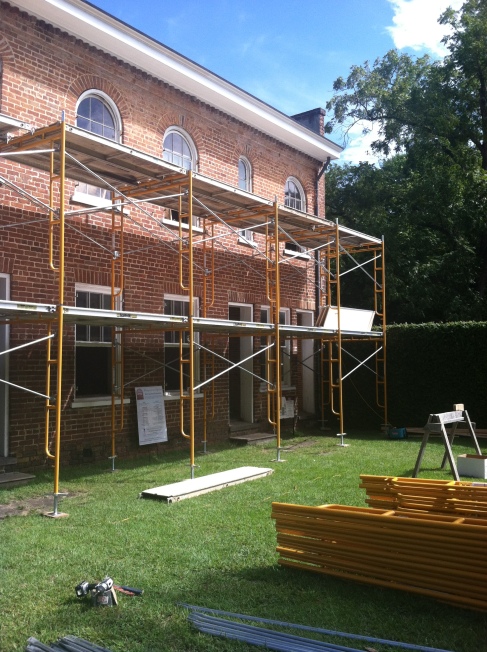
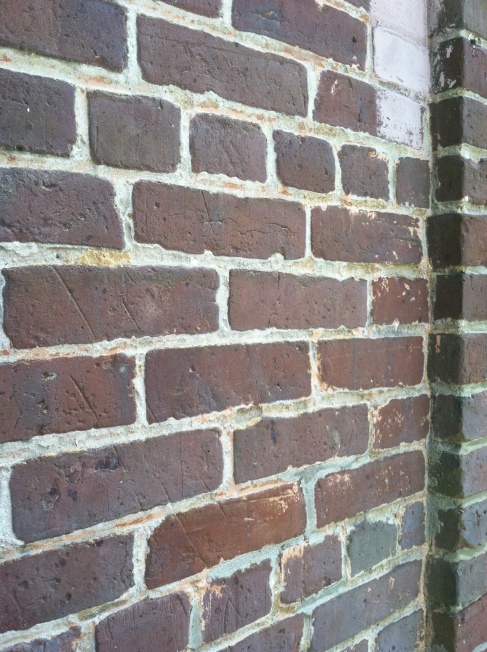
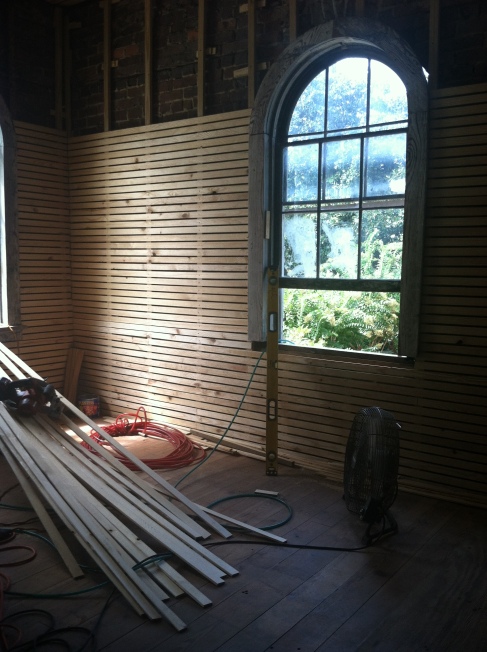
Sponsors for Slave Quarter Restoration

Thanks to our generous sponsors!
The Companies and Contractors currently working Slave Quarters Restoration
Restoration of the Bellamy Mansion’s urban Slave Quarters is currently underway. The restoration of this historical landmark is in the hands of local artisans that specialize in restoration and preservation of historic properties. Luther T. Rogers, III or Tommy is a third generation contractor, and President of Rogers Building Corporation. The Rogers team is reconstructing the building’s carpentry work back to its original state. Rogers has worked on many historical buildings in the Wilmington area including the Bellamy Mansion. Francisco Castillo is the owner of CGC Historic Restorations Inc. and is overseeing the restoration of the masonry, and plaster work. Castillo is a skilled artisan that trained as an apprentice under a master craftsman in Barcelona, Spain, he is certified through Pitt Community College, and was awarded the Historic Wilmington Foundation Preservation Award in 2009. In Wilmington he has worked on other historical site including the Latimer House and the Bellamy Mansion. Rodney Allen is contracted to restore the shutters of the building. He is a contract carpenter that has worked with the Rogers Building Corporation on several historical locations in the Wilmington area including the Williams House and the Murchison House. Details on the specific techniques of the restoration process can be found in other articles on this website.

